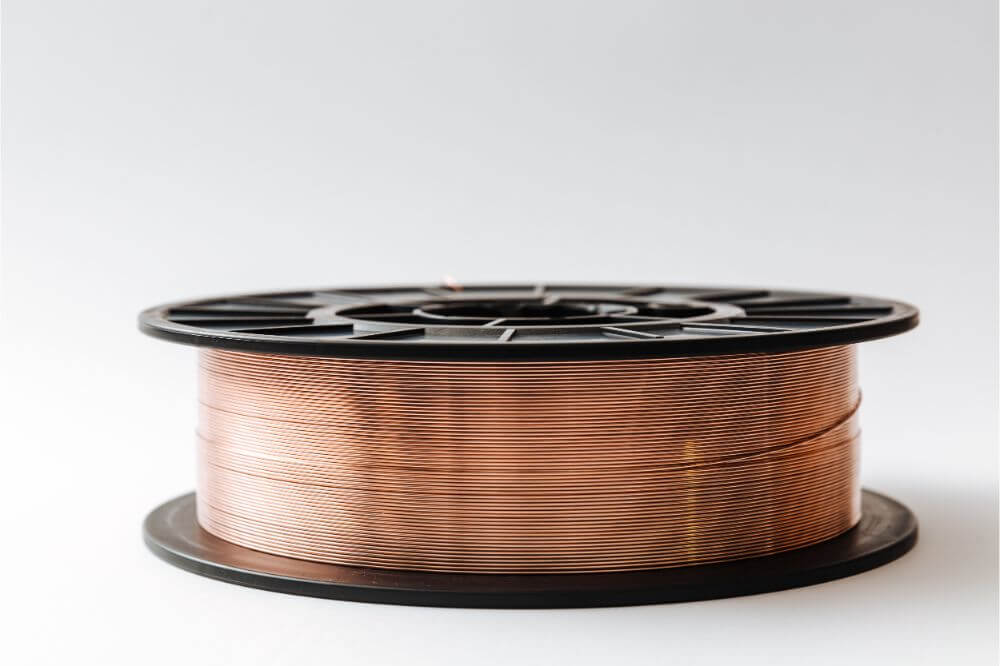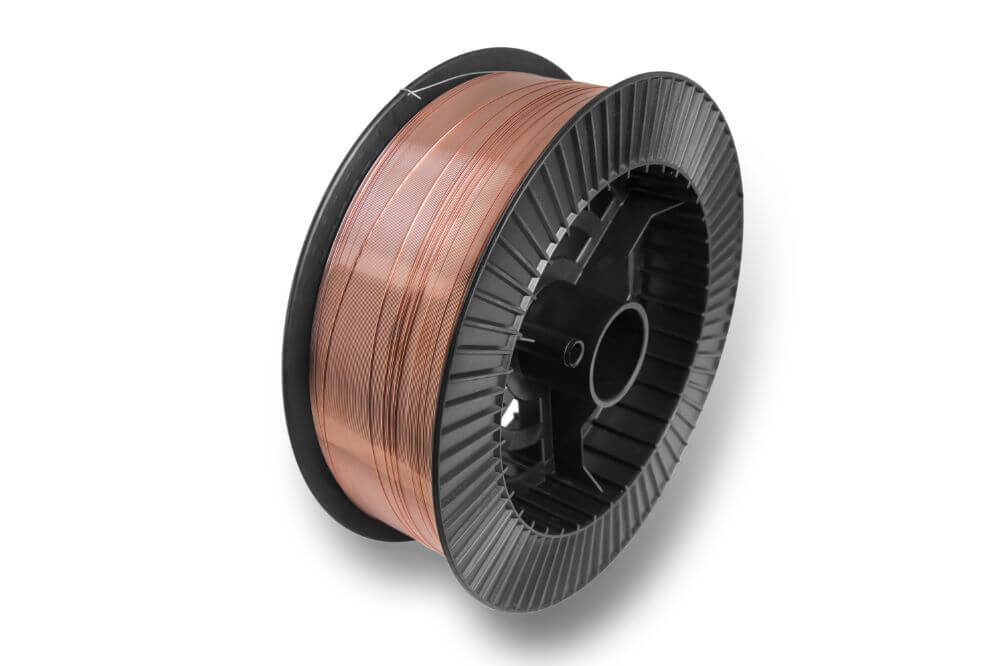Mig welding is a popular welding process used in many industrial and home applications. It is a type of arc welding that uses a consumable wire electrode and an electric arc to join two pieces of metal together.
The wire electrode is fed through a welding gun, which creates an electric arc and melts the wire, forming a weld joint. In order to get the best results from a mig welding process, it’s important to use the right type of mig welding wire.
In this article, we’ll discuss the different mig welding wire types and how to select the right one for your project.
What is mig welding wire?
MIG welding wire is a consumable part of the welding process, and it is continuously fed through a welding gun. There are four main types of MIG welding wire to choose from: steel, stainless steel, aluminum, and flux-cored.
Each type of wire has its own set of properties that make it suitable for specific welding applications.
Steel MIG welding wire is one of the most common types of MIG welding wire. It is typically made with a copper coating that helps to provide strength and improved electrical conductivity.
Steel MIG welding wire is best for welding mild and low alloy steel, making it an ideal choice for automotive, construction, and general fabrication applications.
Stainless steel MIG welding wire is designed to be used in welding projects that involve stainless steel. The wire is made with a copper coating to help with electrical conductivity and is available in various sizes. Stainless steel MIG welding wire is especially useful for welding in corrosive environments.
Aluminum MIG welding wire is specifically designed to be used on aluminum. It is made with a copper coating to help with electrical conductivity and is available in a range of sizes.
Aluminum MIG welding wire is best for welding aluminum alloys and is great for automotive repair, construction, and general fabrication applications.
Flux-cored MIG welding wire is a type of self-shielding wire that does not require an external shielding gas. It is made with a flux core that helps to protect the weld from oxidation and is available in various sizes.
Flux-cored MIG welding wire is best for welding in outdoor environments and is great for welding thicker materials.
Types of mig welding wire
Steel mig welding wire is the most common type of wire used for welding steel. It usually has a copper coating and is available in different sizes and spool sizes. This type of wire is designed to create strong welds with a deep penetration.
Stainless steel mig welding wire is a more specialized type of wire used to weld stainless steel. It is designed to resist corrosion and oxidation.
Aluminum mig welding wire is designed to weld aluminum and aluminum alloys. It is available in both solid and flux-cored varieties, and is often used in automotive repair.
Flux-cored mig welding wire is a type of wire that is filled with a flux material. It can be used for welding in all positions, and is often used for welding thicker metals.

Steel mig welding wire
Steel mig welding wire is the most common type of mig welding wire used. It’s primarily made of copper-coated mild steel, and is designed to be used with a shielding gas.
Steel mig welding wire is a great choice for welding mild and low alloy steels, and it’s relatively inexpensive compared to other types of welding wire. It’s also relatively easy to use and produces clean welds.
When using steel mig welding wire, it’s important to pay attention to the wire diameter, as this can affect the size of the weld. Additionally, it’s important to make sure that the wire is well-suited for the type of steel that is being welded.
Stainless steel mig welding wire
Stainless steel mig welding wire is the most popular choice for welding stainless steel because it is extremely durable and resistant to corrosion. It is a metal alloy composed of chromium, nickel, and molybdenum and is available in different grades and sizes.
This type of wire produces an extremely strong weld and is ideal for applications that require superior strength and corrosion resistance. When welding stainless steel, it is important to use a shielding gas that is compatible with the wire.
Argon is typically used as a shielding gas, but other gases such as helium and argon-oxygen mixtures can also be used. Depending on the type of application, stainless steel mig welding wire can be used on both thin and thick plates, allowing for a wide range of welding applications.
Aluminum mig welding wire
Aluminum mig welding wire is often favored for its ability to weld aluminum and other non-ferrous metals. It has a much lower melting point than steel or stainless steel mig welding wire, meaning that the welds have a much lower chance of cracking.
Additionally, aluminum mig welding wire is much easier to work with, since it is a much softer material. Aluminum mig welding wire can be used to weld aluminum, magnesium and other non-ferrous metals, making it an excellent choice for a variety of applications.
It is important to note that aluminum mig welding wire is not compatible with steel, so it is important to select the right type of mig welding wire for your project.
Flux-cored mig welding wire
Flux-cored mig welding wire is a unique type of mig welding wire that has a hollow center filled with flux. The flux helps to protect the weld by creating a shield of gas around the weld.
This type of wire is great for outdoor welding because of its wind-resistant properties. It can also be used on thicker materials, such as cast iron, because the flux helps to create deeper penetration.
The only downside to flux-cored mig welding wire is that it can be difficult to control, and it can produce a lot of spatter. To reduce spatter, it is best to use a lower voltage and make sure that the wire is fed at a consistent speed. It is also important to use the right size of wire for the material.
Conclusion
Mig welding wire comes in a variety of different materials and types, each with their own distinct properties and best uses. Steel is the most common type, but stainless steel, aluminum and flux-cored wire are also popular.
Depending on the job at hand, the right type of wire can help improve the quality of the weld as well as make the job easier. No matter which type of mig welding wire you choose, it’s important to make sure you use the right one for the job.

